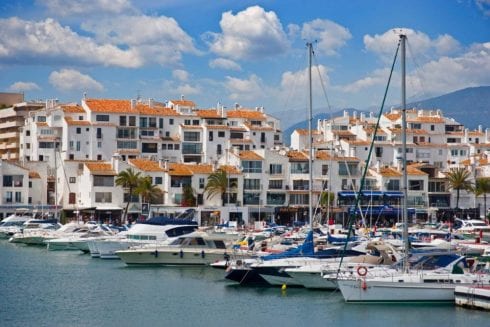MARBELLA is investigating the impact of tourist flats in the city after neighbouring Malaga was hit by protests.
Mayor Angeles Muñoz has announced the town hall is teaming up with the University of Málaga (UMA) to update a 2018 analysis of how tourist apartments are impacting the local housing market.
This move comes amidst nationwide concerns about the proliferation of tourist rentals and their effect on housing availability.
However, Marbella presents a more unique case because, unlike many other cities, the resort town boasts a large foreign resident population.

Many of these residents live in Marbella from September to May, allowing them to rent out their properties during peak tourist season before returning to their home countries for the warmer summer months.
The 2018 study revealed some interesting trends.
It showed that half of Marbella’s tourist accommodation owners are foreign residents themselves. Additionally, 50% of these rentals are for short stays, lasting between one and three months.
Less than 6% of tourist rentals in the city exceed six months.
Geographically, the majority of these properties are located in Nueva Andalucía and Puerto Banus, followed by Marbella’s eastern area.
Notably, only 6% of tourist rentals are found in the city centre, suggesting a focus on luxury vacation properties rather than competition with traditional apartment living.

The new study will delve deeper into the recent changes brought about by the Junta’s decree regulating tourist accommodations.
This decree grants local authorities more power in shaping regulations for these rentals.
The study will also consider the significant shifts the tourism sector has undergone since the pandemic.
Muñoz stressed that the study isn’t meant to stifle tourism, a vital part of Marbella’s economic engine.
Instead, the goal is to strike a balance between a thriving tourist industry and ensuring residents have access to affordable housing.
The study is expected to be completed by year’s end, with its findings paving the way for potential regulatory measures by the Marbella town hall.
The move has been prompted by the demonstrations that broke out in Malaga’s historical centre last weekend.
Thousands of people protested in the La Merced neighbourhood where the Picasso Museum is located.
It is one of the worst affected neighbourhoods in Malaga, with 68.91% of the housing being used for tourist apartments.
Shocking recent statistics showed that in the historic centre of Malaga, nearly half of the flats (42.68%) are dedicated to tourists.
With 41,038 registered tourist apartments as of February 2024, Malaga province has witnessed a 16% increase in this type of housing over the past year.
The protests come as Cadiz is set to become the latest Spanish city to announce a ban on new Airbnbs in the historical centre.
Cadiz mayor Bruno García said landlords will no longer be able to register their properties with the Junta for tourist licences.
Previously, weeding out Airbnb flats involved identifying and reporting non-compliant properties to the Junta for delisting from their registry.
This system has already seen nearly 300 flats deregistered by the Cadiz City Council in the last year.
But the new policy should streamline the process and significantly reduce the number of tourist rentals plaguing the historic centre.
The move comes as city officials fret about suffering the same fate as neighbours Sevilla and Malaga, where the impact of excessive tourism has limited housing availability and gutted the overall character of the city.
Garcia has also put the large number of existing unlicensed Airbnbs in his sights.
He announced plans for a joint campaign with the Junta to tackle illegal Airbnb rentals, although a specific start date for this initiative has yet to be announced.
The campaign will focus on carrying out inspections to identify illegal Airbnb hosts, who will be hit with heavy fines.
The city will also establish a dedicated hotline for residents to report suspected illegal tourist apartments.
Click here to read more Marbella News from The Olive Press.








